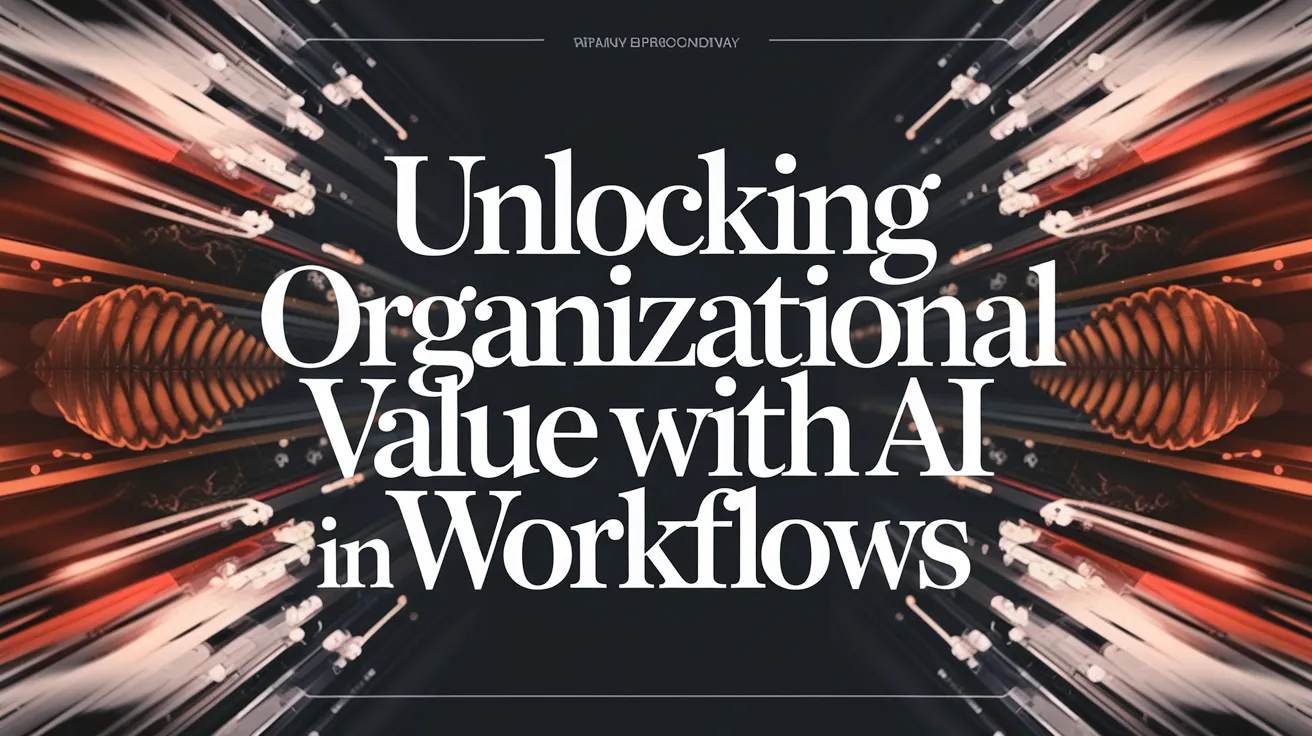Unlocking Organizational Value with AI in Workflows

Organizations around the globe are increasingly grappling with the challenge of translating the promise of artificial intelligence (AI) into concrete business outcomes. The essential factor lies not merely in having advanced AI capabilities but in seamlessly integrating these technologies into organizational workflows. Achieving the full potential of AI necessitates a delicate balance of domain expertise, accessible data, and effective orchestration of technology.
The Reality of AI Initiatives
For the past two years, nearly every CEO has highlighted the transformative potential of generative AI (GenAI) and emerging agentic AI technologies in driving efficiency and profitability. While we are indeed experiencing an AI super cycle marked by significant technological advancements, a pressing question remains: how can business leaders convert this potential into actionable results?
Sadly, the results so far have been lackluster. According to a Boston Consulting Group (BCG) report, approximately 70% of enterprise AI initiatives are unable to achieve scalable value. Furthermore, 40% of senior executives report that their initiatives stall beyond the pilot stage, indicating a pervasive struggle to move beyond isolated AI efforts.
Challenges of Integration
Why is the gap between AI’s promise and its practical utility widening? The primary issue stems from a lack of understanding regarding the interplay between data, domain knowledge, and the integration of AI into existing workflows. Having a state-of-the-art large language model (LLM) or an advanced agentic framework is insufficient if it cannot be integrated throughout complex business processes.
This challenge is particularly pronounced in heavily regulated sectors such as insurance, banking, finance, and healthcare, where the potential for AI to enhance customer experiences can be hindered by data restrictions and operational hurdles. Take, for example, the insurance industry which spends more than $350 billion annually on claims processing and underwriting—a sector prone to inefficiencies.
In personal auto insurance alone, insurers face staggering losses of up to $30 billion each year due to missing or inaccurate information in underwriting and claims processes. Herein lies an opportunity ripe for AI intervention, yet many in the industry find themselves impeded by the very tools designed to simplify these processes.
Embedding AI in Workflows
To truly unlock AI’s value, organizations must focus on integrating this technology directly into their workflows. This requires establishing a robust foundation built upon domain expertise, data accessibility, and appropriate AI technology. The orchestration of these elements is crucial for accelerating value realization and transitioning from experimentation to tangible results.
Before implementing any AI model, organizations need individuals with deep domain expertise—those who understand the nuances of specific industries and know where to source the requisite data. For example, automating an insurance workflow requires a deep understanding of the insurance domain; generic tech knowledge simply will not suffice.
Once sufficient expertise is present, data becomes a crucial element. Data serves as the lifeblood of AI; however, organizations often mistakenly believe that they must undergo prolonged data migration projects to centralize all data before utilizing it for AI. In reality, leveraging modern data ontologies and application programming interfaces (APIs) allows for the selective extraction of relevant data and the creation of comprehensive, data-driven workflows.
Orchestrating Effective Workflows
With the right expertise and accessible data, organizations can begin exploring AI use cases. In the context of insurance claims, this is the stage where teams can fine-tune LLMs and assess data extraction tools to enhance the underwriting process, improve risk assessment, and mitigate processing latency. This phase often reveals the necessity for custom agentic models tailored to specific claims analysis challenges instead of relying on generic solutions.
Success in the AI landscape hinges on a deliberate orchestration of the entire process—understanding the workflow intricacies, determining the requisite data, and effectively integrating AI solutions. Those organizations that can carefully delineate the problems they wish to address will be best positioned to select the most suitable datasets and AI tools for their needs, optimizing for speed, accuracy, and cost-efficiency.
The Path Forward
Our firm’s approach to aiding organizations in seamlessly embedding AI into their workflows capitalizes on the substantial domain expertise and data capabilities we have cultivated. This strategy promotes the implementation of effective horizontal and vertical solutions to deliver outstanding results.
Currently, we are actively involved in embedding AI in the workflows of leading organizations across insurance, banking and finance, and healthcare sectors. Beyond improving operational efficiency, our efforts are driving enhanced customer experiences and tangible business outcomes. In the healthcare sector alone, where erroneous claims payments cost the industry approximately $180 billion every year, we have successfully recaptured $2.2 billion by deploying AI algorithms that identify fraudulent medical billing—a critical step in resolving long-standing industry challenges.
To learn more about EXL’s innovative work in integrating AI within enterprise workflows, please visit www.exlservice.com.
About the author: Rohit Kapoor is chairman and CEO of EXL, a global data and AI company.